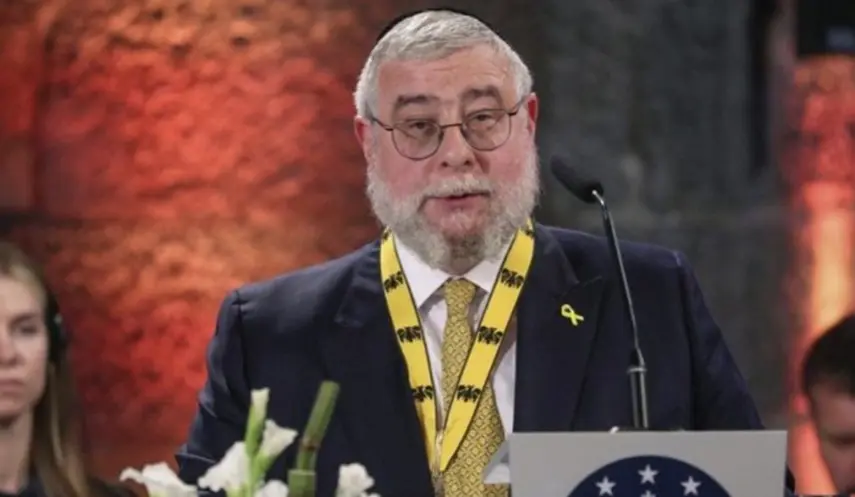GOSPODSKA STREET - HANDWRITTEN
Republika Srpska - Banja Luka - sights /7/
06/08/2025
10:00

BANJA LUKA, JUNE 8 /SRNA/ - The iconic street in the center of Banja Luka has changed names throughout history, but for the people of Banja Luka it has always been and remains Gospodska Street /the Gentlemen Street/, as it was handwritten on a plaque placed on his house by landlord Tomo Radulović back in 1878.
This street, which is one of the symbols of Banja Luka, is called Gospodska Street by the city's residents. The name came into being at a time when the status of a gentleman was earned through honor, a system of values, and work for progress and the common good.
"It was called Gospodska Street simply because the gentlemen of Banja Luka lived there. But not gentlemen by wealth, top hat and cane, or rather by bourgeois clothing, posture, habits and lifestyle in the then predominantly peasant Krajina, but also by their system of values, worldview, and philosophy of life," wrote Professor Emeritus Nenad Kecmanović.
It was, as a rule, he states, the first generation of Banja Luka entrepreneurs who, through hard work and with what would be called managerial skills today, created capital, but not only to expand their business, increase profits and enjoy spending, but also to educate not only their descendants and in various ways contribute to the development of their environment and the construction of civil society.
And so, says Kecmanović, the awareness that status obliges - the tradition of charitable work and care for the common good, that is, the well-being of other members of the community - developed.
"They were not some future Banja Luka Rockefellers, Carnegies, Rothschilds, nor could they have become so if the occupation in 1941 had not interrupted that continuity. But the owners of the first sawmills, brickyards, tanneries, shops, hotels, pharmacies, cafes, hairdressing shops and fashion salons in the city, together with prominent professors, priests, doctors, lawyers, journalists, founded the first schools, libraries, museums, cultural and artistic societies, sports organizations, chess clubs, philatelist associations, and organized balls, gatherings and other local festivities that make up modern city and civic life," Kecmanović wrote.
THROUGHOUT HISTORY, IT WAS CALLED GUNDULIĆEVA AND ALFONSO THE THIRTEENTH STREET
It is an interesting and true story that in 1878, in the very first days of the Austro-Hungarian occupation, the landlord Tomo Radulović placed a plaque on his house with the handwritten words Gospodska Street on it. The name came to life on Austrian postcards, where Gospodska Street was called Harrengasse, and also among the people.
The street has changed names throughout history. There are indications that in the 1920s it was called Gundulićeva Street.
During the Vrbas Banate /1929-1941/ in the Kingdom of Yugoslavia, it was named after King Alfonso the Thirteenth, after the Spanish monarch who saved the lives of 16 Banja Luka residents sentenced to death in the High Treason Trial.
After the occupation by the infamous NDH, it was named after Mile Budak, one of the ideologists of the Ustasha movement. After liberation in 1945, it was named after the national hero Veselin Masleša, who came from a famous merchant family that had two houses on that street. It is still called after this writer, translator, journalist and revolutionary today, but for the people of Banja Luka it will always remain Gospodska Street.
ROMAN LEGEND OF TREASURE AND THE HORSE CHESTNUT
Legend says that even during the time of the Roman Empire, when Banja Luka was a small military camp, the road that is today called Gospodska Street was a key trade route.
The Romans used it to transport goods, but also gold and valuables. One legend says that a Roman military officer hid a priceless treasure beneath the then stone foundations of this street, and only those who can pass under the shadow of the horse chestnut tree in a precisely defined way will be able to discover its location. /to be continued/

GOLDSCHMIDT: STILL WAITING FOR APOLOGY FROM BiH AUTHORITIES

POSSIBLE COOPERATION BETWEEN ALMAZOV RESEARCH CENTRE AND UNIVERSITY CLINICAL CENTRE

SARAJEVO "TROIKA" WANTS TO WEAKEN SNSD - THE BIGGEST OBSTACLE TO UNITARY BiH



